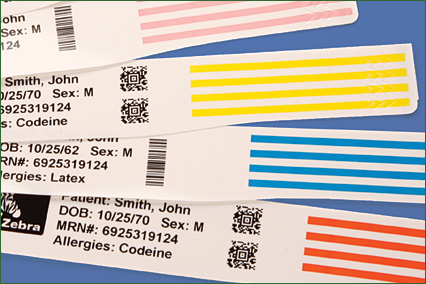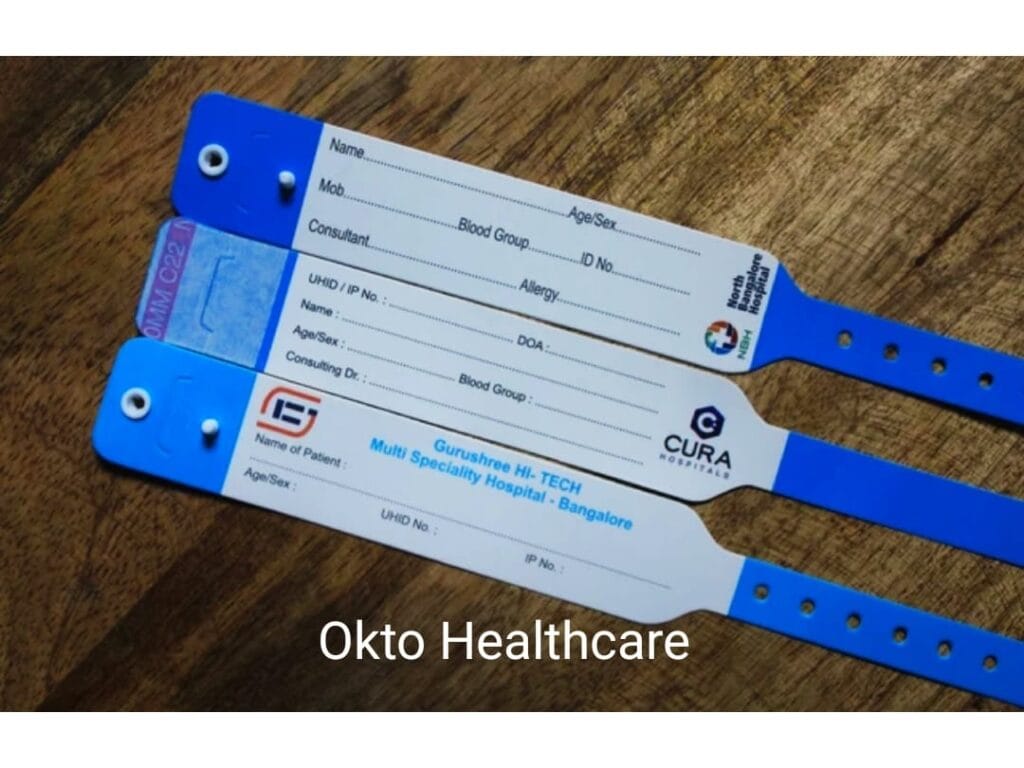Why Every Healthcare Facility Should Carry Out Patient Identification Band for Its Patients
Why Every Healthcare Facility Should Carry Out Patient Identification Band for Its Patients
Blog Article
Streamlining Patient Treatment With Effective Recognition Bands
The application of effective identification bands is an essential aspect in improving individual treatment within healthcare setups. These bands not only serve to minimize the risks connected with patient misidentification yet likewise improve interaction amongst medical employees, consequently fostering a more secure setting. Different kinds of recognition bands satisfy particular needs, from durable wristbands for adults to specialized bands for babies and essential cases. As the landscape of client recognition evolves, one have to take into consideration the ramifications of these systems on overall medical care shipment and patient end results. What technologies wait for in this vital location?
Significance of Person Identification
Guaranteeing exact client recognition is vital in health care setups, as it straight affects the security and top quality of care supplied. Misidentification can cause significant mistakes, including administering the wrong drug, performing wrong procedures, or miscommunicating essential client info. Such mistakes not just threaten client safety but can additionally result in lawful ramifications and lowered count on healthcare systems.
Reliable individual recognition is fundamental to establishing a safe environment where patients receive suitable and personalized care. It facilitates the exact documents of medical backgrounds, allergic reactions, and treatment plans, making certain that health care providers have accessibility to essential info in all times. Furthermore, robust identification protocols help enhance interaction among medical staff, boosting collaboration and reducing the threat of mistakes.

Types of Recognition Bands
Identification bands play a critical duty in keeping precise patient records and boosting security within healthcare atmospheres. Numerous kinds of recognition bands are used to cater to the particular demands and demands of different person populaces.

Another kind is the ankle band, which is especially valuable for babies and babies, guaranteeing that identification stays undamaged also during treatment treatments. Specialty bands, such as those for allergy signals or fall threat indicators, supply extra layers of security by attracting immediate interest to crucial person problems.
Lately, digital identification bands have obtained popularity, including barcodes or RFID technology that can be checked to quickly retrieve individual information. These bands enhance process and lessen the threat of human error throughout patient identification procedures.
Benefits of Reliable Recognition
Effective recognition of patients via using identification bands adds considerably to overall patient security and care top quality. By making certain that each person is properly identified, doctor can successfully match medical therapies and treatments to the correct person, lessening the risk of mistakes. This is specifically important in environments with high person turn over, where the possibility for misidentification is greater.
Furthermore, effective recognition bands improve interaction amongst healthcare groups. Clear and precise patient identification promotes cooperation and guarantees that all group participants understand an individual's certain demands and clinical background. This communication is important for supplying worked with treatment, especially in emergency situation situations where time is important.

Eventually, efficient identification via the usage of recognition bands not just safeguards clients however also promotes a society of safety and security within health care facilities (Patient Identification Band). By focusing on accurate recognition, medical care organizations can improve end results and improve the general patient experience
Applying Recognition Equipments
While the value of client identification is well acknowledged, the execution of robust recognition systems presents a facility obstacle for healthcare companies. Establishing effective identification systems requires a thorough strategy, incorporating innovation, employees training, and process integration.
First, companies need to pick ideal recognition technologies, such as barcode scanning, RFID, or biometric systems. Patient Identification Band. These technologies should be reviewed based on cost, usability, and compatibility with existing infrastructure. A pilot program can help determine possible concerns before major execution
Next, thorough training for personnel is crucial. All personnel have to understand the importance of exact individual identification and excel in using the picked innovations. Routine training updates and assessments can enhance ideal techniques and guarantee ongoing compliance.
Furthermore, medical care companies must establish standard procedures for individual identification across all departments, decreasing disparities and boosting interaction. Normal audits can aid identify voids in adherence to these methods.

Inevitably, a reliable execution of identification systems not just boosts person security however likewise promotes a culture of liability and diligence within health care settings, guaranteeing regular and dependable client care.
Future Trends in Person Recognition
Developments in technology are readied to change person identification methods in medical care settings. The combination of biometric recognition approaches, such as fingerprinting and face recognition, is anticipated to improve accuracy and protection. These innovations can considerably reduce the threat of misidentification, guaranteeing that patients get the right treatments and medicines.
In addition, the application of blockchain innovation for person records is obtaining grip. This decentralized approach can offer a tamper-proof and secure technique for managing individual identities, consequently streamlining accessibility to essential info throughout various doctor.
An additional trend is the raising use of mobile wellness applications that leverage QR codes for person identification. These applications permit real-time updates and simple accessibility to client information, equipping healthcare specialists to make enlightened choices quickly.
Additionally, expert system (AI) is positioned to play a key duty go in examining client identification data, determining patterns, and predicting potential recognition mistakes prior to they take place.
As these innovations progress, they promise not only to improve client security yet likewise to enhance the total effectiveness of health care shipment systems. Welcoming these innovations will be vital for future-proofing individual care practices.
Verdict
To conclude, effective recognition bands are necessary for enhancing person security and care high quality within medical care setups. By minimizing the risks related to misidentification, these bands assist in prompt and accurate info retrieval, inevitably boosting interaction among medical care service providers. The implementation of durable identification systems not just fosters a society of safety yet also positions health care establishments to adjust to future trends in patient recognition modern technology, guaranteeing optimum outcomes for individuals in diverse medical settings.
As the landscape of client identification develops, one must think about the ramifications of these systems on general health care distribution and client results.Effective patient identification is fundamental to developing a secure setting where people get tailored and appropriate care. Ultimately, prioritizing reliable patient identification strategies not just cultivates a culture of safety yet likewise contributes to enhanced person outcomes and general fulfillment with medical care solutions.
Reliable identification of people with the use of recognition bands contributes dramatically to overall individual safety and security and care quality. The application of durable identification systems not just promotes a society here are the findings of safety and security however additionally positions health care establishments to adjust to future trends in view person identification innovation, making certain ideal outcomes for people in diverse clinical environments.
Report this page